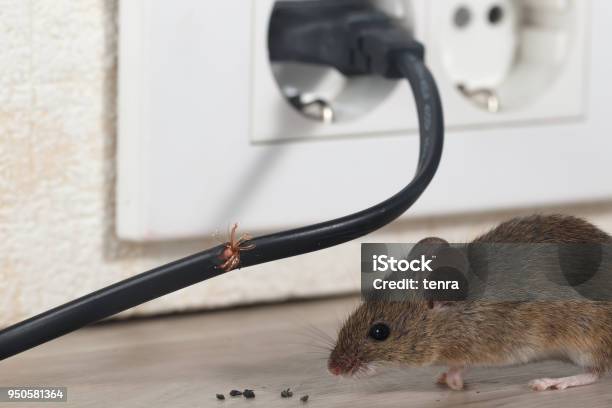The Hidden Threat: Unknown Dangerous Rodents That Could Be in Your Backyard
When most people think of dangerous animals, their minds immediately jump to large predators like bears, wolves, or venomous snakes. Few consider that some of the world’s most lethal creatures scurry around on four tiny legs and could easily be mistaken for harmless garden visitors. The rodent family harbors some surprisingly dangerous members that possess capabilities ranging from deadly venom to disease transmission so severe it could end a human life within days.
While North America doesn’t host the most dangerous rodent species on Earth, understanding the broader spectrum of rodent dangers helps put our local threats into perspective and highlights why even seemingly innocent rodents deserve respect and caution. From venomous mammals that seem like science fiction to disease carriers that have shaped human history, the world of dangerous rodents reveals nature’s ability to pack lethal surprises into surprisingly small packages.
The World’s Only Poisonous Rodent
In the mountains and forests of East Africa lives a creature that looks like a cross between a porcupine and a skunk but carries a secret weapon that puts it in a league of its own among mammals. The African crested rat, also known as the maned rat, holds the distinction of being the world’s only known poisonous rodent. This rabbit-sized creature resembles a gray puffball and appears deceptively harmless, yet its fur contains poison so lethal it can fell an elephant, and just a few milligrams can kill a human.
The crested rat doesn’t produce this poison naturally. Instead, it has evolved one of nature’s most ingenious chemical warfare strategies. The rat seeks out the bark of the Acokanthera tree, which contains ouabain, a cardiac glycoside so toxic that African hunters have used it to poison arrow tips for centuries. The rat chews this bark and then methodically applies the poisonous mixture to specialized hairs along its flanks.
What makes this creature truly remarkable is its specialized anatomy designed for chemical defense. The mane of long, coarse black-and-white banded hairs extends from the top of the animal’s head to just beyond the base of its tail. This mane borders a broad, white-bordered strip of hairs covering an area of glandular skin on the flank where the poison is concentrated. When threatened, the rat arches its back and raises this poisonous crest, effectively turning itself into a living weapon.
The toxin is so potent that predators who attempt to attack the crested rat often die within minutes of contact. Dogs that have encountered these rats in areas where they’ve been introduced have died rapidly after brief encounters, demonstrating the lethal effectiveness of this unique defense mechanism.
North America’s Venomous Surprise
While North America doesn’t host poisonous rodents, it does harbor something equally unexpected: venomous mammals. Several species of short-tailed shrews inhabit various parts of the United States and North America, and all of these species hunt with venom-saturated saliva that paralyzes prey. Though shrews are technically not rodents but belong to their own mammalian order, they’re often confused with mice and represent the closest thing to a venomous “rodent-like” creature in North America.
These tiny predators lack the hollow, venom-injecting fangs of snakes, so they evolved a different method of introducing poison into their victims. Short-tailed shrews produce venom in their submaxillary glands, and their grooved teeth help deliver the toxin when they bite. The venom contains enzymes that break down proteins and can paralyze creatures much larger than the shrew itself.
While shrew venom isn’t typically dangerous to humans, bites can cause localized pain, swelling, and burning sensations that can persist for several days. The primary danger comes from mistakenly handling what appears to be a harmless small mammal, only to receive a painful and memorable lesson about nature’s hidden defenses.
The Disease Carriers Among Us
Beyond exotic poisonous and venomous species, the greatest danger from rodents comes from their role as disease vectors. North American rodents carry an alarming array of pathogens that can cause severe illness or death in humans, often transmitted through seemingly innocuous contact or exposure to contaminated environments.
Hantavirus represents one of the most serious rodent-borne threats in North America. Human hantavirus infections were first identified in the Southwest in 1993, and the disease can manifest in two forms: Hantavirus Pulmonary Syndrome, a severe lung disease which can be fatal, and a milder form called Non-Pulmonary Hantavirus infection. The virus spreads through inhalation of particles from infected rodent urine, droppings, or saliva, making cleanup of rodent-infested areas particularly hazardous.
The mortality rate for Hantavirus Pulmonary Syndrome approaches 40 percent, and symptoms can progress rapidly from flu-like complaints to severe respiratory distress requiring immediate medical intervention. What makes hantavirus particularly insidious is that infected rodents often show no signs of illness themselves, making it impossible to identify dangerous animals by visual inspection alone.
Lymphocytic choriomeningitis virus presents another serious threat, with the common house mouse serving as its primary host. It’s estimated that 5 percent of house mice throughout the United States carry LCMV and can transmit the virus to humans through direct contact with infected animals, their droppings, urine, or nesting materials. Pregnant women face particular risks, as the virus can cause severe birth defects or fetal death.
Rat bite fever, despite its name, doesn’t require an actual bite for transmission. This bacterial infection can spread through contact with infected rodents or contaminated food and water. The disease causes fever, vomiting, headache, and muscle pain, and if left untreated, can lead to serious complications including heart infection, pneumonia, and death.
Perhaps most historically significant is bubonic plague, also called the “Black Death.” While plague cases are rare in modern North America, the disease persists in wild rodent populations throughout the western United States. Transmission typically occurs when fleas from infected rodents bite humans, though direct contact with infected animals can also spread the disease. Untreated plague has a mortality rate approaching 60 percent, but modern antibiotics are highly effective when treatment begins promptly.
The Evolutionary Arms Race
Understanding dangerous rodents requires appreciating the evolutionary pressures that shaped these remarkable adaptations. Rodents occupy a unique ecological niche as both predators of smaller creatures and prey for larger animals. This dual role has driven the evolution of sophisticated survival strategies that can pose unexpected threats to humans who encounter them unprepared.
The African crested rat’s poison strategy represents millions of years of evolutionary refinement. Rather than evolving the ability to produce toxins internally, which would require significant metabolic resources, the rat learned to co-opt existing plant toxins for its own defense. This strategy allows the rat to maintain the toxicity of its coating by seeking out fresh plant material while avoiding the energetic costs of synthesizing complex poisons.
Venomous shrews demonstrate a different evolutionary pathway, developing internal venom production systems that allow them to hunt prey much larger than themselves. A shrew’s extremely high metabolic rate requires constant feeding, and venom allows these tiny predators to quickly subdue prey that might otherwise escape or fight back effectively.
Disease transmission represents perhaps the most successful rodent survival strategy from an evolutionary perspective. By serving as reservoirs for pathogens that don’t significantly harm the rodent hosts but can devastate other species, rodents gain a competitive advantage in environments where they come into contact with potential predators or competitors.
Recognition and Safety Protocols
The key to staying safe around potentially dangerous rodents lies in understanding that appearances can be deceiving and that all rodent encounters should be approached with appropriate caution. Even familiar species like house mice and common rats can carry lethal pathogens, making proper safety protocols essential for anyone who might encounter rodent-infested areas.
Never handle rodents directly, whether living or dead, without appropriate protective equipment including gloves, masks, and eye protection. Rodent droppings, urine, and nesting materials should be treated as potentially hazardous biological material requiring proper cleanup procedures that minimize airborne particle exposure.
When cleaning areas contaminated by rodent activity, ventilate the space thoroughly and wear respiratory protection rated for fine particles. Avoid sweeping or vacuuming rodent droppings, as these activities can aerosolize dangerous pathogens. Instead, wet down contaminated materials with disinfectant and remove them carefully to minimize dust generation.
If you suspect exposure to rodent-borne pathogens, seek medical attention immediately and inform healthcare providers about potential rodent contact. Early intervention can be crucial for diseases like hantavirus and plague, where delayed treatment significantly increases mortality risk.
International Threats and Border Concerns
While North America’s native rodent dangers are significant, international travel and global commerce create opportunities for dangerous rodent species to establish populations outside their native ranges. The African crested rat, while currently confined to East Africa, represents the type of species that could potentially establish populations in suitable North American habitats if introduced accidentally or intentionally.
Climate change and shifting global trade patterns increase the likelihood of encountering non-native species with unknown danger profiles. Imported goods, international shipping, and increased global travel all create pathways for dangerous rodent species to reach new environments where local predators and ecosystems may be unprepared for their unique defensive capabilities.
Additionally, native rodent species may become more dangerous as environmental pressures change their behavior, distribution, and pathogen loads. Habitat destruction can force wild rodents into closer contact with human populations, increasing transmission opportunities for zoonotic diseases. Climate change may expand the geographic range of disease-carrying rodent species or alter the virulence of the pathogens they carry.
The Invisible Danger Network
Perhaps most concerning about dangerous rodents is how their threat networks operate largely invisibly to human observation. Unlike large predators whose presence is obvious, dangerous rodents often integrate seamlessly into human environments while carrying lethal capabilities that only become apparent after exposure has already occurred.
A single infected mouse living in a wall void can contaminate an entire home’s air supply with hantavirus particles through normal movement and nest-building activities. Homeowners may live for months in increasingly dangerous environments while remaining completely unaware of the growing threat level in their own living spaces.
The lag time between exposure and symptom onset for many rodent-borne diseases means that by the time people realize they’ve encountered a dangerous situation, the opportunity for preventive intervention has passed. This delayed-effect danger profile makes rodent-borne threats particularly insidious compared to more immediate dangers like venomous snake bites or large predator attacks.
Understanding the true scope of rodent-associated dangers requires recognizing that these small mammals have evolved sophisticated strategies for survival that can pose unexpected and serious threats to human health and safety. While most rodent encounters remain harmless, the potential consequences of underestimating these creatures are severe enough to justify treating all rodent interactions with appropriate respect and caution.
The world of dangerous rodents reveals nature’s remarkable ability to concentrate lethal capabilities into small, seemingly innocuous packages. From the world’s only poisonous mammal hiding in African forests to the disease-carrying mice living in North American homes, these creatures demonstrate that size doesn’t correlate with danger level. By understanding and respecting the hidden threats that rodents can represent, we can better protect ourselves and our families while maintaining appropriate appreciation for the remarkable evolutionary adaptations that make these small mammals far more dangerous than their appearance might suggest.






